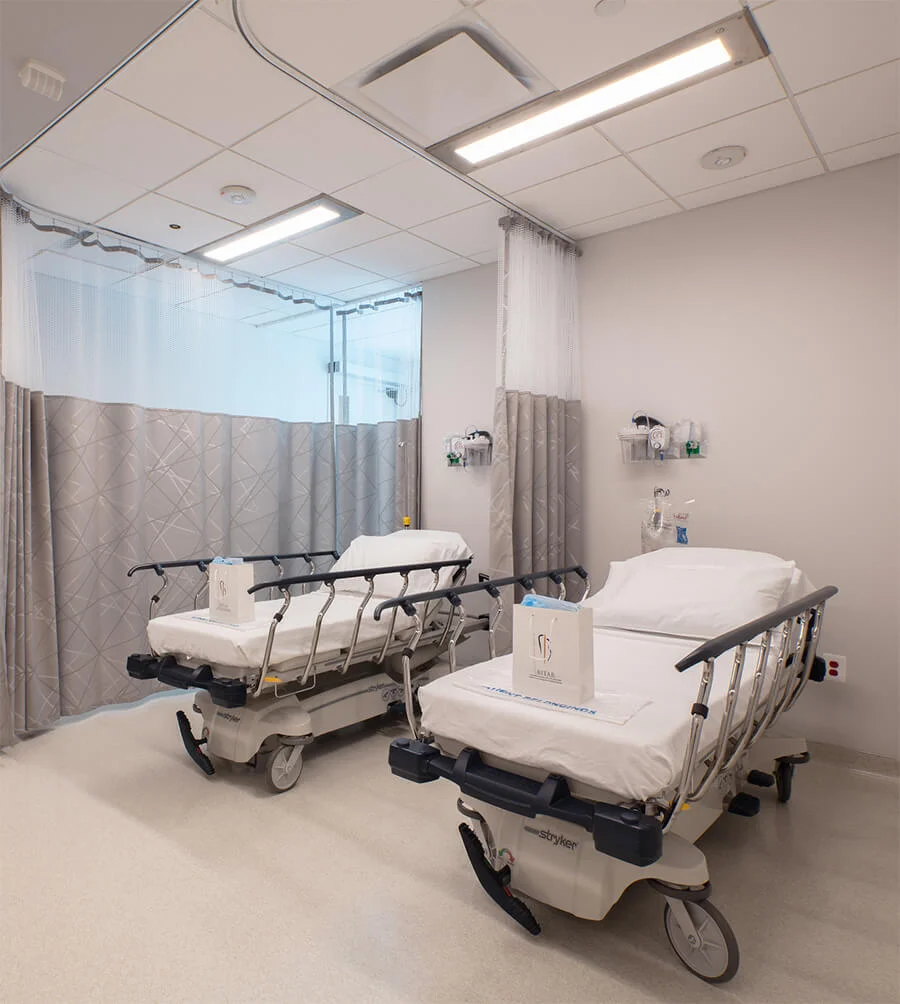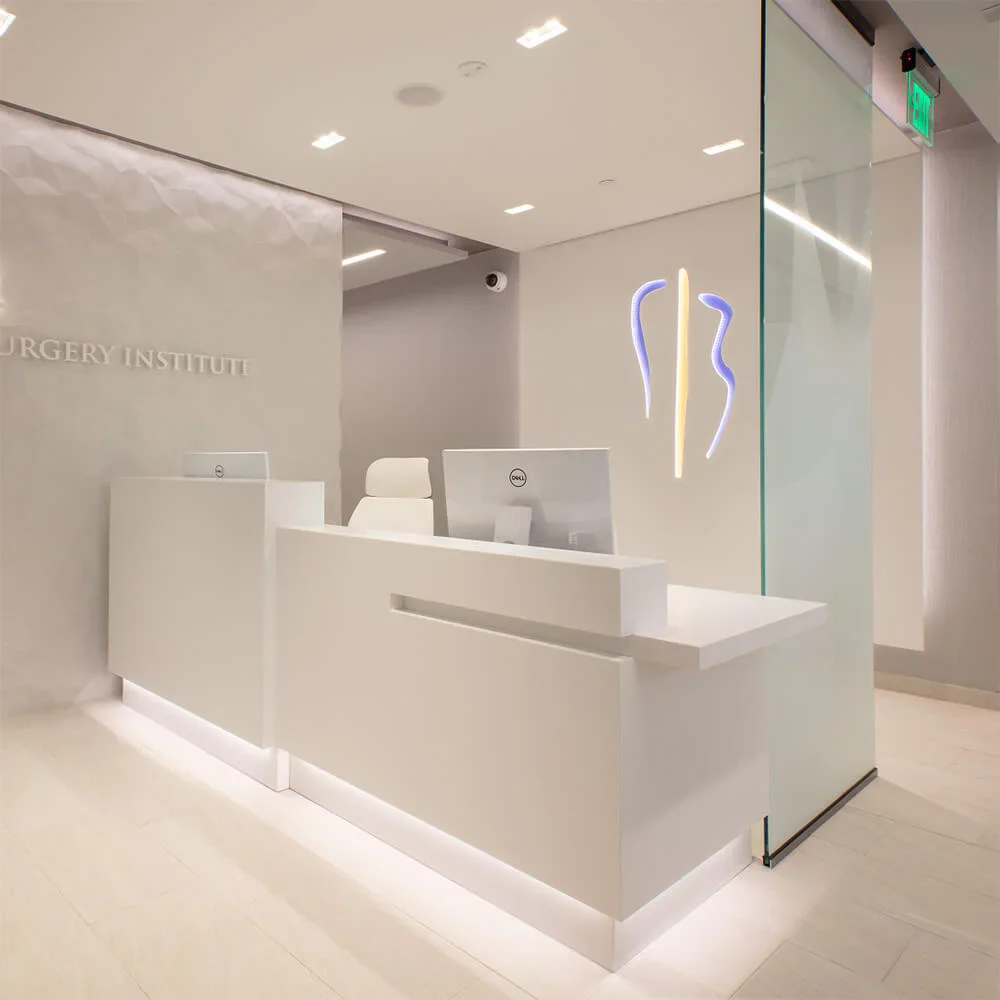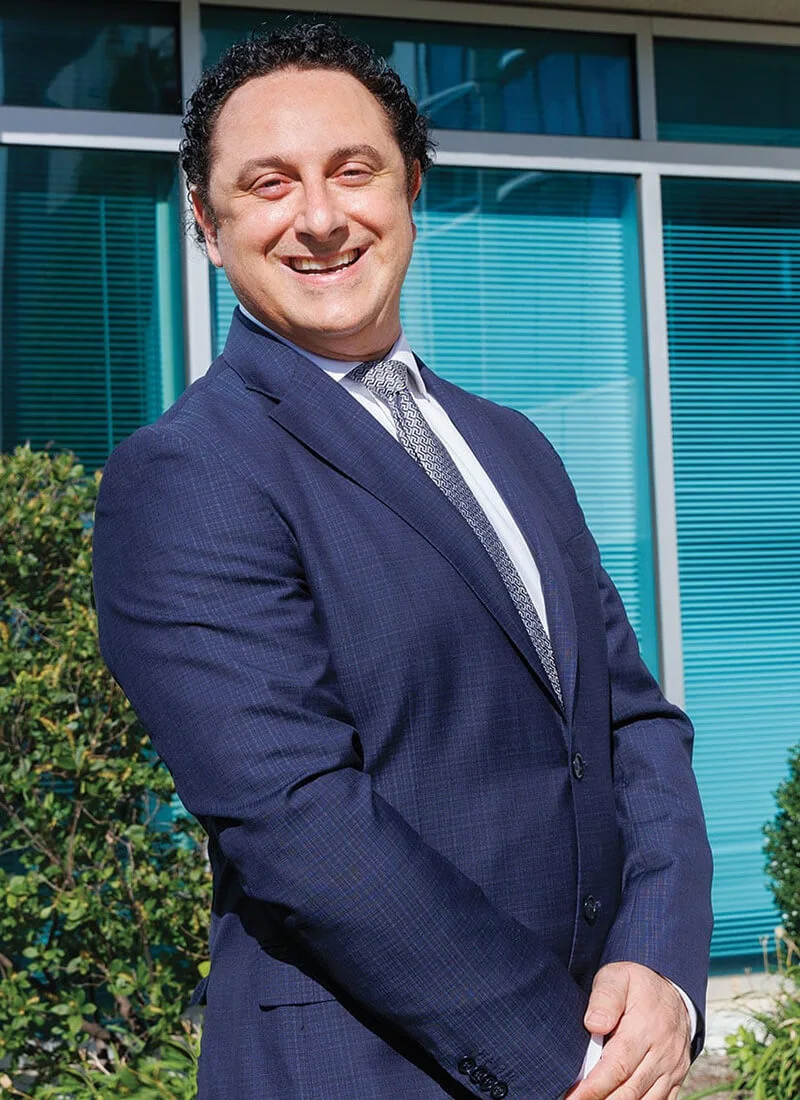For those in the greater Washington, D.C. area whose ears stick out or have an enlarged earlobe, they sometimes push their ears back and wish they could remain in that position. This is a simple action that can be created permanently through surgery. Protruding, or prominent, ears can cause a lot of psychological trauma to a patient due to distasteful comments or ridicule by others, and according to one statistic, it can occur in about five percent of people. Otoplasty, also known as ear pinning, is a cosmetic procedure that can be performed as early as age seven, when ear growth has nearly reached maturity. Typically, children may tell their parents that they are being teased at school because of their ears, and the parents seek to have their child’s ear protrusion corrected.
Some patients have their protruding ears pinned as adults. These patients may want to improve their facial appearance or would like to wear their hair in a ponytail. This last option is difficult for them to accept because they are used to wearing their hair in a way that covers their ears. Either one ear or both can be protruding, and the level of protrusion may vary. An ear pinning operation, or Otoplasty, is performed to correct this condition and enhance a patient’s level of self-satisfaction with their self-image.
An elongated or protruding earlobe typically happens in older years. A wedge of skin may be removed to shorten the lobule. If a crease appears in the middle of the lobule, and the lobule folds on itself, then injecting the ear with Restylane or Radiesse can solve the problem for months to years, but not permanently.
It is important to distinguish a prominent or protruding ear from other ear deformities, such as a “cup” ear, a missing ear, or a traumatized ear with missing parts. These examples are addressed with other procedures tailored to those particular conditions.
Pain Level After Surgery
Mild-Moderate
Anesthesia
General
Duration of Surgery
1-2 Hours
Scars
Hidden incisions behind the ears
Final Results
6-12 Months
Return to Regular Work
1-2 Weeks
Resume Exercise
4-6 Weeks
Price Range
Call for Pricing

Ear pinning, or otoplasty, is a cosmetic surgical procedure designed to correct prominent or protruding ears by repositioning them closer to the head. At the Bitar Cosmetic Surgery Institute, just 25 minutes from Washington, D.C., in Fairfax, VA, this procedure is carefully performed to restore facial balance and help patients feel more confident in their appearance. The surgery focuses on reshaping the ear cartilage to create a natural-looking contour while correcting asymmetry or an overly wide ear angle. In many cases, otoplasty is performed during childhood, once the ears have finished developing, but it can also be performed safely and successfully for adults who have felt self-conscious for years. Whether one or both ears are affected, Dr. Bitar tailors the procedure to the unique anatomy of each patient, always striving for subtle, harmonious results that don’t look “surgical.”
Otoplasty offers both emotional and physical benefits, particularly for patients who have endured teasing, bullying, or years of discomfort due to the appearance of their ears. For children and adults alike, one of the most immediate benefits is a boost in self-confidence, especially when they can comfortably wear hairstyles pulled back or participate in social situations without fear of judgment. In addition to its psychological impact, ear pinning helps create greater facial symmetry, which can enhance overall attractiveness and soften harsh lines or profile imbalances. The results are long-lasting and in most cases, permanent. At our Fairfax practice, serving the greater Washington, D.C., Metropolitan area, patients often describe ear pinning as life-changing, allowing them to feel at ease with their appearance from every angle.
An initial consultation is scheduled, during which we discuss the ear pinning procedure and determine whether you are a suitable candidate for the surgery. Your medical history will be reviewed, and you will be asked to see your medical doctor for a physical check-up and a few laboratory tests to ensure you can undergo the surgery safely. You are asked to stop medications that cause bleeding, such as aspirin or aspirin-like products (Motrin or Ibuprofen), a week before this procedure. You are asked to stop smoking two weeks before and two weeks after surgery, for the surgery to be performed safely, and for you to have optimal results. You are given the opportunity to speak with patients who have undergone the same surgery you are considering. We will see you shortly after the surgery (in a day or two, usually). You are seen regularly after your surgery. You are always welcome to return for a follow-up, even years after your surgery, at no additional charge.
The best candidates for otoplasty are healthy individuals—children or adults—who are bothered by the size, shape, or position of their ears. Most pediatric patients are at least 7 years old, which is when their ears have typically reached near-adult size and can be safely reshaped. Adults of any age can also undergo ear pinning if they are in good health and have realistic expectations about the results. Candidates should be non-smokers (or willing to quit temporarily), without any untreated ear infections or medical conditions that could interfere with healing.
Ear pinning has to be done, leaving the patient in a situation where their ears do not bother them. A key concept to understand is that the ears appear to be “bigger” than normal. This appearance is due to one or more of the following factors:
To correct a protruding ear, we examine it with the patient looking in the mirror and observe the ear’s shape. We make a plan together to correct the aspect of the ear’s appearance that bothers the patient.
The operation is performed under general anesthesia and is typically done on both ears. However, some people have one normal ear and one protruding ear, so only the protruding ear is corrected. After a patient is given anesthesia, the previously noted three factors are addressed. If a patient does not have an upper pole fold, one can be created by lifting the skin of the ear and suturing the cartilage to itself to form a fold. Next, if there is an excessive amount of cartilage in the middle of the ear, then that cartilage is trimmed appropriately. Finally, if the angle that the ear makes with the scalp is larger than normal, then a portion of skin is resected from behind the ear, and the ear is sutured –or “ pinned back” – to the scalp. Then, dressings are placed to protect the ears, and the patient is awakened and discharged home when they are ready.

Our office will provide a comprehensive post-operative plan to ensure the best possible outcome. The plan will outline what to expect postoperatively, including estimated recovery time, pain management, garments or dressings, and anticipated activity level. For your safety, we require that an adult stay with you at least the first 24 hours after surgery and drive you to your next-day follow-up visit. With most facial procedures, you will be instructed to limit activity for the first week or two, which could include restrictions on driving, prolonged travel, and flying. Additionally, we recommend that you refrain from exercise until cleared by your physician, typically around four weeks post-surgery. You are asked to refrain from smoking for a minimum of two weeks. To optimize healing, we recommend that you eat a high-protein diet. You should anticipate a variable degree of bruising and swelling, as with any surgical procedure; light make-up may be used to cover bruises starting a week after surgery. We also offer scar creams at an additional cost to optimize results.
To promote healing and minimize complications, you will be seen in a series of post-op appointments, including the day after surgery. These appointments will continue throughout the first year after the procedure to make sure you are healing as planned. For your added convenience, you also have direct access to Dr. Bitar’s cell phone number, should you need to reach him outside of office hours. The final post-operative visit, one year after surgery, is one of our favorites, as the results are fully apparent, and we love seeing our patients happy. You are always welcome to return and visit us, even years after your surgery.

At the Bitar Cosmetic Surgery Institute, we take pride in providing our patients with the best possible surgical experience, emphasizing patient safety while striving to optimize surgical results. This process includes comprehensive pre-operative preparation and patient education, the development of a personalized operative plan, and a thoughtful post-operative care regimen that emphasizes patient comfort and promotes recovery.
The Institute has adopted several strategies to further ensure patient safety. We are selective and only offer surgery to patients whose overall health and lifestyle choices allow for healing and facilitate recovery. To minimize risk, we require a comprehensive preoperative assessment that includes a thorough history and physical examination, as well as targeted laboratory tests.
All surgeries are performed in-house at our AAAASF-accredited surgical suite, representing the gold standard in patient safety and care. This certification ensures we meet the highest standards, with board-certified anesthesiologists and nurses on-site, adhering to strict protocols to minimize risks and optimize outcomes. Dr. Bitar is committed to continuing education, refining his skills, and introducing new techniques, all with the goal of enhancing safety and surgical outcomes.
We emphasize patient safety in our peri-operative care plan, advocating early mobilization, optimizing nutrition, and providing detailed care instructions. After surgery, patients are seen in our office frequently and early, starting the day after their procedure, and a staff member is available around the clock for any questions or concerns. Our entire team is dedicated to our patients’ well-being, and every measure is designed to minimize potential complications, promote a comfortable and rapid recovery, and optimize surgical outcomes.

octor-patient experience. Dr. George Bitar is a distinguished board-certified plastic surgeon who stays on the cutting edge of advancements in cosmetic surgery and technology to offer the best possible results. With a blend of artistry and meticulous surgical technique, he achieves beautiful and natural results for our patients. We provide a high level of patient safety, and our experienced and caring staff will be with you every step of the way. Our institute offers a comprehensive range of surgical and non-surgical options, including skin care, injectables, and laser treatments, as well as in-office and hospital procedures, providing a versatile approach tailored to individual patient needs. Your aesthetic goals are our top priority, and each procedure is carefully customized to ensure you achieve the best possible outcome.
For more information, call our office at 703-206-0506.
The cost of Ear Pinning in Fairfax and the greater Washington, D.C., area can vary depending on the complexity of the procedure, whether one or both ears are treated, and whether any additional techniques (such as earlobe reduction or cartilage reshaping) are required. The average cost ranges from $6,500 to $8,500, which includes the surgeon’s fee, facility costs, and anesthesia. During your consultation, Dr. Bitar will provide a personalized quote tailored to your anatomy and aesthetic goals. We also offer financing options to help make this transformative procedure accessible for qualified patients.
If you are in the Washington, D.C. area and would like further information about this procedure, please do not hesitate to contact our office in Fairfax, VA to schedule an appointment by calling (703) 206-0506 or completing an online request form.

Never miss out on the latest offerings, transformations, and behind-the-scenes at Bitar Cosmetic Surgery Institute.
“Natural beauty but doing a little somethin’ somethin’ to make beautiful features pop is what the Model Lift™ accomplishes.”
–
Dr. George Bitar
Follow Us On Social Media